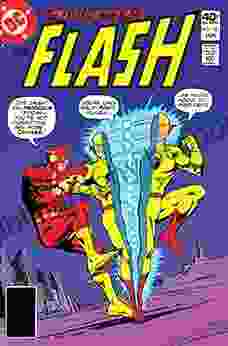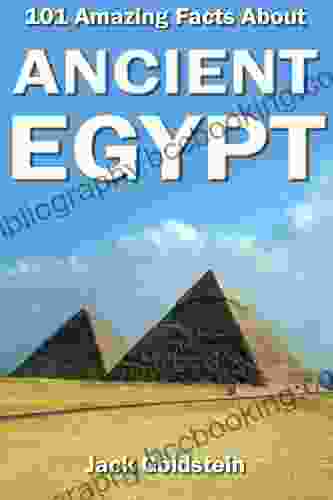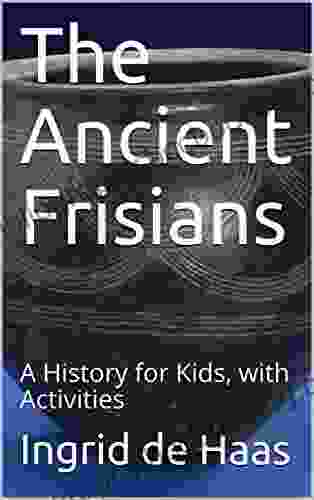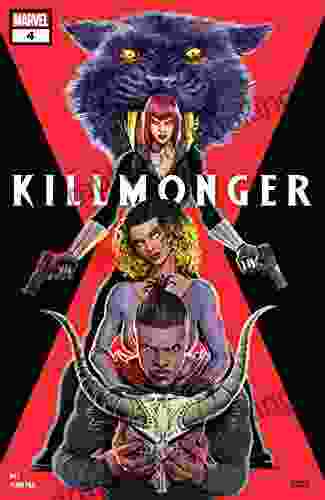How to Cultivate a Thriving Community: Unlocking the Secrets of Participation, Problem-Solving, and Identity Exploration

In an era where social isolation and fragmentation often dominate headlines, the importance of community has never been more profound. Communities provide a sense of belonging, support, and purpose, fostering our well-being and inspiring collective action. However, cultivating a thriving community is not a passive endeavor; it requires active participation, collaborative problem-solving, and a deep exploration of our own identities.
In this comprehensive guide, we will delve into the essential elements of community building, empowering you to harness the transformative power of participation, problem-solving, and identity exploration. By understanding the dynamics of community engagement, we can unlock the potential for vibrant, inclusive, and impactful communities.
4.5 out of 5
| Language | : | English |
| File size | : | 2153 KB |
| Text-to-Speech | : | Enabled |
| Screen Reader | : | Supported |
| Print length | : | 216 pages |
Chapter 1: The Power of Participation
Participation is the lifeblood of any thriving community. It is through our active involvement that we contribute to the collective tapestry, share our unique perspectives, and shape the decisions that affect our lives.
Benefits of Participation:
- Increased social capital: Participation builds bridges between individuals, fostering trust, reciprocity, and a shared sense of ownership.
- Enhanced problem-solving: Diverse perspectives and experiences enhance our ability to identify and address community challenges effectively.
- Greater civic engagement: Participation empowers individuals, fostering a sense of agency and responsibility for their community's well-being.
- Improved well-being: Social connection and a sense of purpose contribute to overall happiness and life satisfaction.
Barriers to Participation:
- Lack of time: Busy schedules and competing priorities can limit our ability to engage in community activities.
- Lack of access: Transportation issues, childcare responsibilities, or physical limitations can hinder participation for some individuals.
- Discrimination and exclusion: Prejudice, stereotypes, and institutional barriers can prevent marginalized groups from fully participating.
Overcoming Barriers to Participation:
- Create flexible opportunities: Offer a variety of participation options, including virtual meetings, online forums, and community events.
- Remove barriers to access: Provide transportation assistance, childcare, and accessible meeting spaces.
- Promote inclusivity: Foster a culture of respect and welcome for all members of the community, regardless of their background or identity.
Chapter 2: Collaborative Problem-Solving
Problems are an inevitable part of community life. However, when we approach them collaboratively, we can transform challenges into opportunities for growth and renewal.
Steps to Collaborative Problem-Solving:
- Identify the problem: Clearly define the issue at hand, gathering input from all stakeholders.
- Generate solutions: Brainstorm a wide range of potential solutions, encouraging creativity and out-of-the-box thinking.
- Evaluate solutions: Analyze the feasibility, effectiveness, and potential impact of each solution.
- Select a solution: Make a decision based on consensus or majority vote, ensuring that all voices are heard.
- Implement the solution: Develop a plan for implementing the chosen solution, assign responsibilities, and monitor progress.
Benefits of Collaborative Problem-Solving:
- Improved decision-making: Diverse perspectives and collective wisdom lead to better and more informed decisions.
- Enhanced buy-in: When people feel involved in the problem-solving process, they are more likely to support and implement the solution.
- Increased community cohesion: Collaborative problem-solving fosters a sense of shared purpose and common ground.
Chapter 3: Identity Exploration and Community Building
Our sense of identity is deeply intertwined with our community. By exploring our own identities and those of our neighbors, we can build more inclusive and meaningful connections.
Identity and Community:
- Our identities shape how we interact with others: Our values, beliefs, and experiences influence our relationships within the community.
- Community shapes our identities: The norms, traditions, and expectations of our community can influence our sense of self.
- Inclusive communities value diversity: Communities that embrace and celebrate the diversity of their members foster a sense of belonging for all.
Identity Exploration Activities:
- Self-reflection exercises: Take time to reflect on your values, beliefs, and experiences, and how they shape your identity.
- Community dialogue: Engage in respectful conversations with others about their identities and perspectives.
- Arts and storytelling: Use art, music, and storytelling to express and explore your own and others' identities.
Benefits of Identity Exploration:
- Increased self-awareness: A deeper understanding of our own identities empowers us to make more informed decisions and live more authentic lives.
- Enhanced empathy: By exploring the identities of others, we develop a greater capacity for understanding and compassion.
- Stronger community connections: When we share and celebrate our identities, we build bridges between people and foster a sense of unity.
Cultivating a thriving community is an ongoing journey, one that requires the active participation, collaborative problem-solving, and identity exploration of all its members. By embracing these essential elements, we can create vibrant, inclusive, and impactful communities where everyone feels a sense of belonging, purpose, and growth.
Remember, the power of community lies within us, the individuals who make it up. By harnessing our collective energy, wisdom, and compassion, we can unlock the transformative potential of community and create a better world for ourselves and generations to come.
Call to Action
If you are passionate about building thriving communities, I encourage you to take the following steps:
- Engage in your community: Attend community meetings, volunteer your time, and participate in local events.
- Be a collaborative problem-solver: Share your ideas and work with others to find solutions to community challenges.
- Explore your own identity: Reflect on your values, beliefs, and experiences, and share them with others in a respectful and open way.
- Be an advocate for inclusivity: Welcome and embrace people from all backgrounds and identities, creating a truly inclusive community.
Together, we can build communities where everyone feels a sense of belonging, purpose, and growth. Let us embrace the transformative power of participation, problem-solving, and identity exploration, and create a brighter future for all.
4.5 out of 5
| Language | : | English |
| File size | : | 2153 KB |
| Text-to-Speech | : | Enabled |
| Screen Reader | : | Supported |
| Print length | : | 216 pages |
Do you want to contribute by writing guest posts on this blog?
Please contact us and send us a resume of previous articles that you have written.
 Book
Book Novel
Novel Page
Page Chapter
Chapter Text
Text Story
Story Genre
Genre Reader
Reader Library
Library Paperback
Paperback E-book
E-book Magazine
Magazine Newspaper
Newspaper Paragraph
Paragraph Sentence
Sentence Bookmark
Bookmark Shelf
Shelf Glossary
Glossary Bibliography
Bibliography Foreword
Foreword Preface
Preface Synopsis
Synopsis Annotation
Annotation Footnote
Footnote Manuscript
Manuscript Scroll
Scroll Codex
Codex Tome
Tome Bestseller
Bestseller Classics
Classics Library card
Library card Narrative
Narrative Biography
Biography Autobiography
Autobiography Memoir
Memoir Reference
Reference Encyclopedia
Encyclopedia Penina L Baltrusch
Penina L Baltrusch Ian Olney
Ian Olney P C Cast
P C Cast Hugh Ryan
Hugh Ryan Jamie Dumas
Jamie Dumas Inc The Staff Of Entrepreneur Media
Inc The Staff Of Entrepreneur Media Victoria D Kraft
Victoria D Kraft Tracy Kidder
Tracy Kidder Sherri Neal
Sherri Neal Mariano Rivera
Mariano Rivera J R Mathews
J R Mathews Igor Kraus
Igor Kraus J Mark Souther
J Mark Souther Jackie Jeffrey
Jackie Jeffrey Jennifer Donnelly
Jennifer Donnelly Irene Flores
Irene Flores Hugh Iwanicki
Hugh Iwanicki Jack Ewing
Jack Ewing Ross Buzzell
Ross Buzzell Jason Thomas
Jason Thomas
Light bulbAdvertise smarter! Our strategic ad space ensures maximum exposure. Reserve your spot today!

 Ralph Waldo EmersonJourney into the Early Years of a Legend: Uncover the Secrets of John F....
Ralph Waldo EmersonJourney into the Early Years of a Legend: Uncover the Secrets of John F.... Franklin BellFollow ·4.8k
Franklin BellFollow ·4.8k Eric HayesFollow ·12.5k
Eric HayesFollow ·12.5k Gabriel HayesFollow ·4k
Gabriel HayesFollow ·4k Clarence MitchellFollow ·14k
Clarence MitchellFollow ·14k Douglas AdamsFollow ·7.2k
Douglas AdamsFollow ·7.2k Mario Vargas LlosaFollow ·9.4k
Mario Vargas LlosaFollow ·9.4k Bruce SnyderFollow ·15.8k
Bruce SnyderFollow ·15.8k Sammy PowellFollow ·15.1k
Sammy PowellFollow ·15.1k

 Luke Blair
Luke Blair101 Amazing Facts About Australia: A Journey Through the...
A Literary Expedition Unveiling the Treasures...

 Harry Hayes
Harry HayesWitness the Velocity and Legacy of the Scarlet Speedster:...
Delve into the Lightning-Charged...

 Stan Ward
Stan Ward101 Amazing Facts About Ancient Egypt: Unraveling the...
: A Timeless Realm of Wonder Ancient Egypt, a...

 Stephen King
Stephen KingEscape into Adventure: Unveil the Secrets of Adventure...
In the annals of comic book history,...

 Forrest Blair
Forrest BlairThe Oxford Dog Training Company Presents: A Holistic...
In the realm of dog...
4.5 out of 5
| Language | : | English |
| File size | : | 2153 KB |
| Text-to-Speech | : | Enabled |
| Screen Reader | : | Supported |
| Print length | : | 216 pages |












